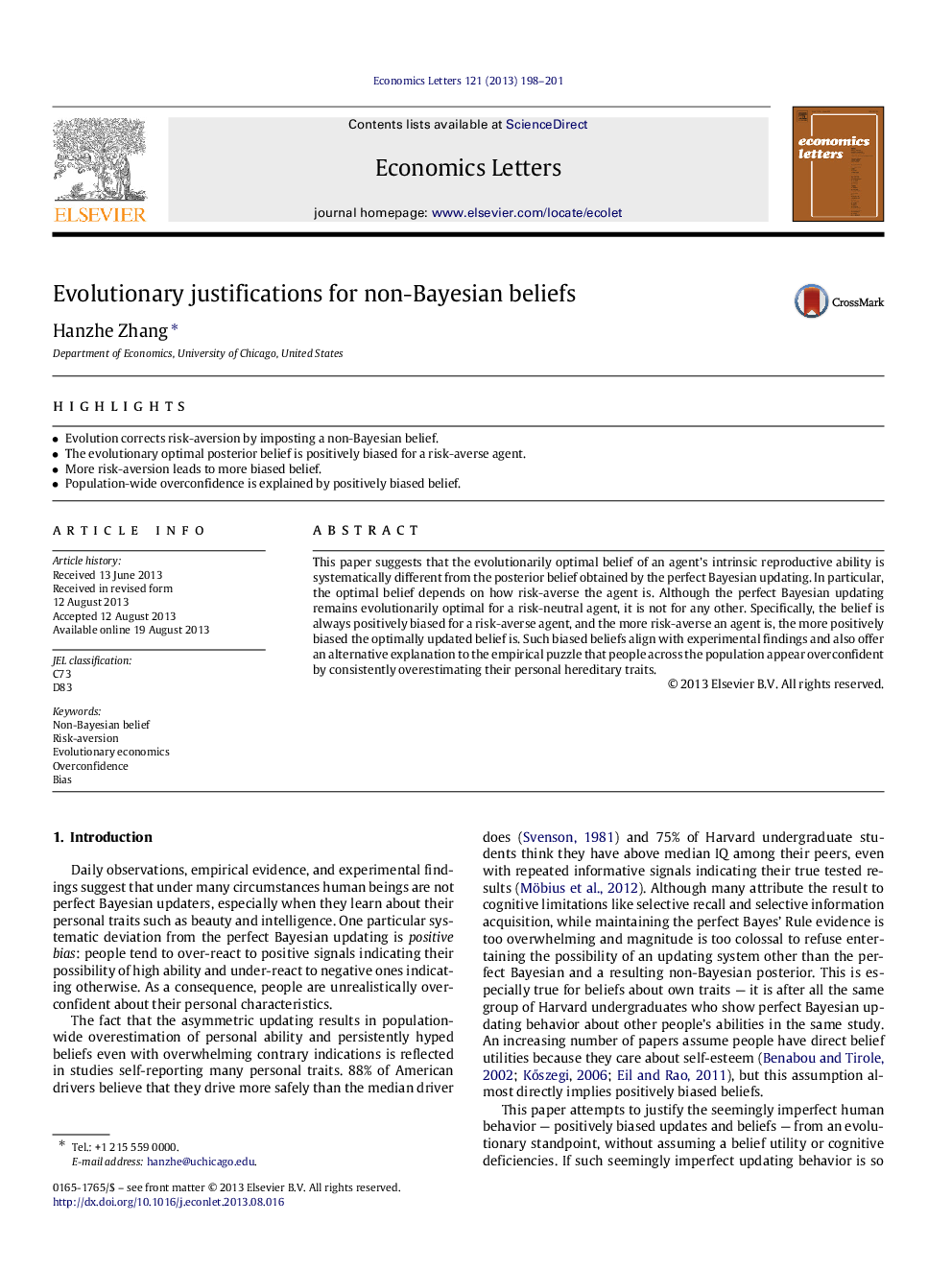| Article ID | Journal | Published Year | Pages | File Type |
|---|---|---|---|---|
| 5059098 | Economics Letters | 2013 | 4 Pages |
â¢Evolution corrects risk-aversion by imposting a non-Bayesian belief.â¢The evolutionary optimal posterior belief is positively biased for a risk-averse agent.â¢More risk-aversion leads to more biased belief.â¢Population-wide overconfidence is explained by positively biased belief.
This paper suggests that the evolutionarily optimal belief of an agent's intrinsic reproductive ability is systematically different from the posterior belief obtained by the perfect Bayesian updating. In particular, the optimal belief depends on how risk-averse the agent is. Although the perfect Bayesian updating remains evolutionarily optimal for a risk-neutral agent, it is not for any other. Specifically, the belief is always positively biased for a risk-averse agent, and the more risk-averse an agent is, the more positively biased the optimally updated belief is. Such biased beliefs align with experimental findings and also offer an alternative explanation to the empirical puzzle that people across the population appear overconfident by consistently overestimating their personal hereditary traits.
